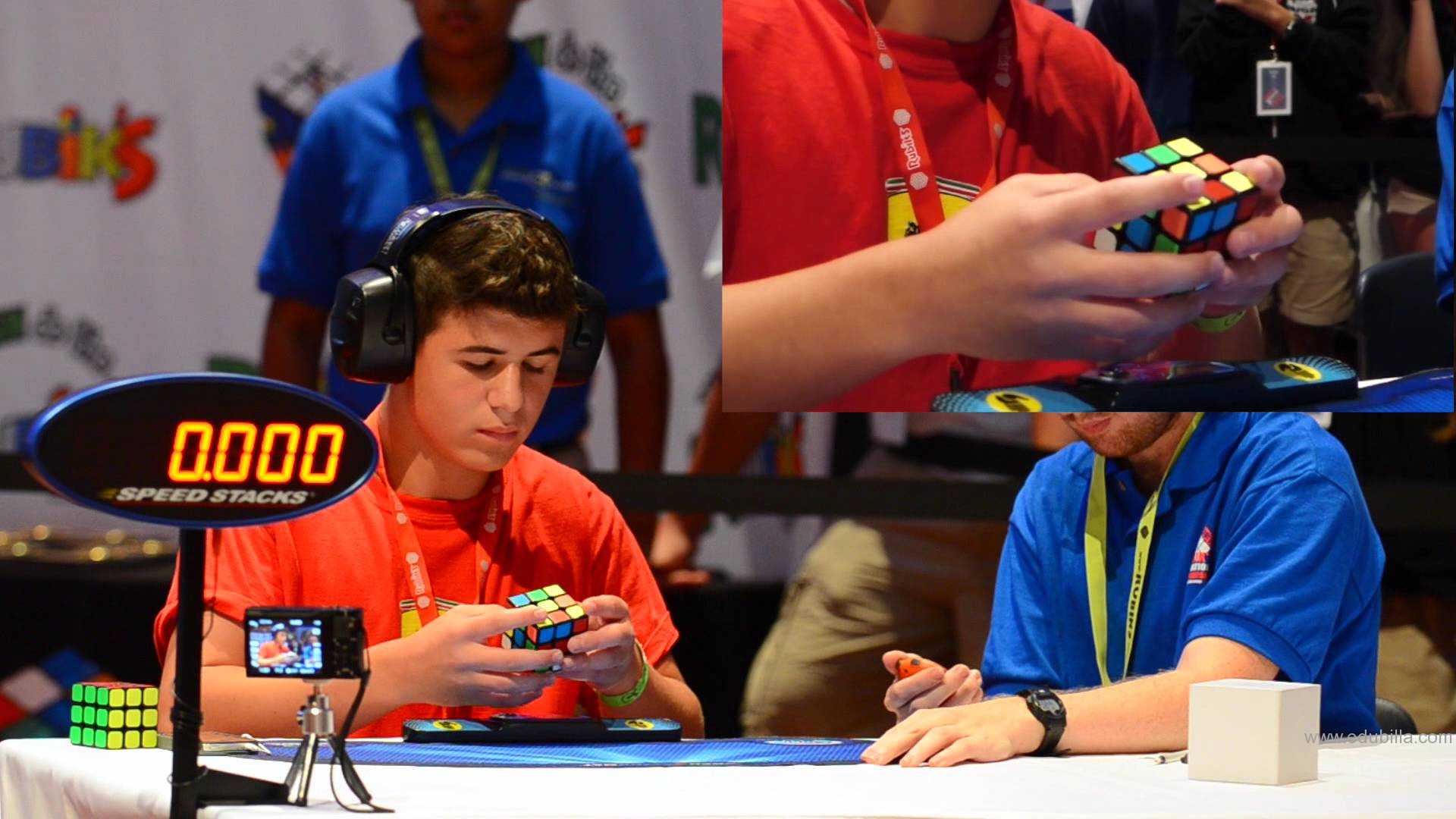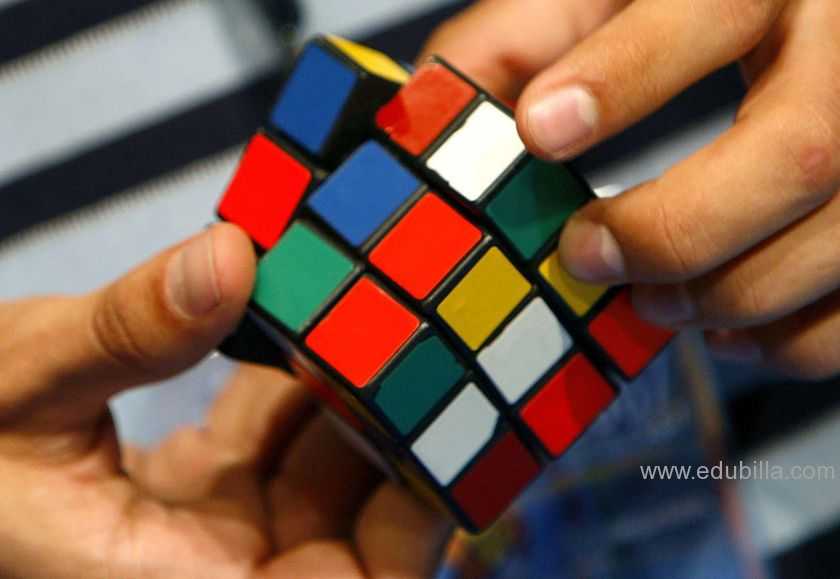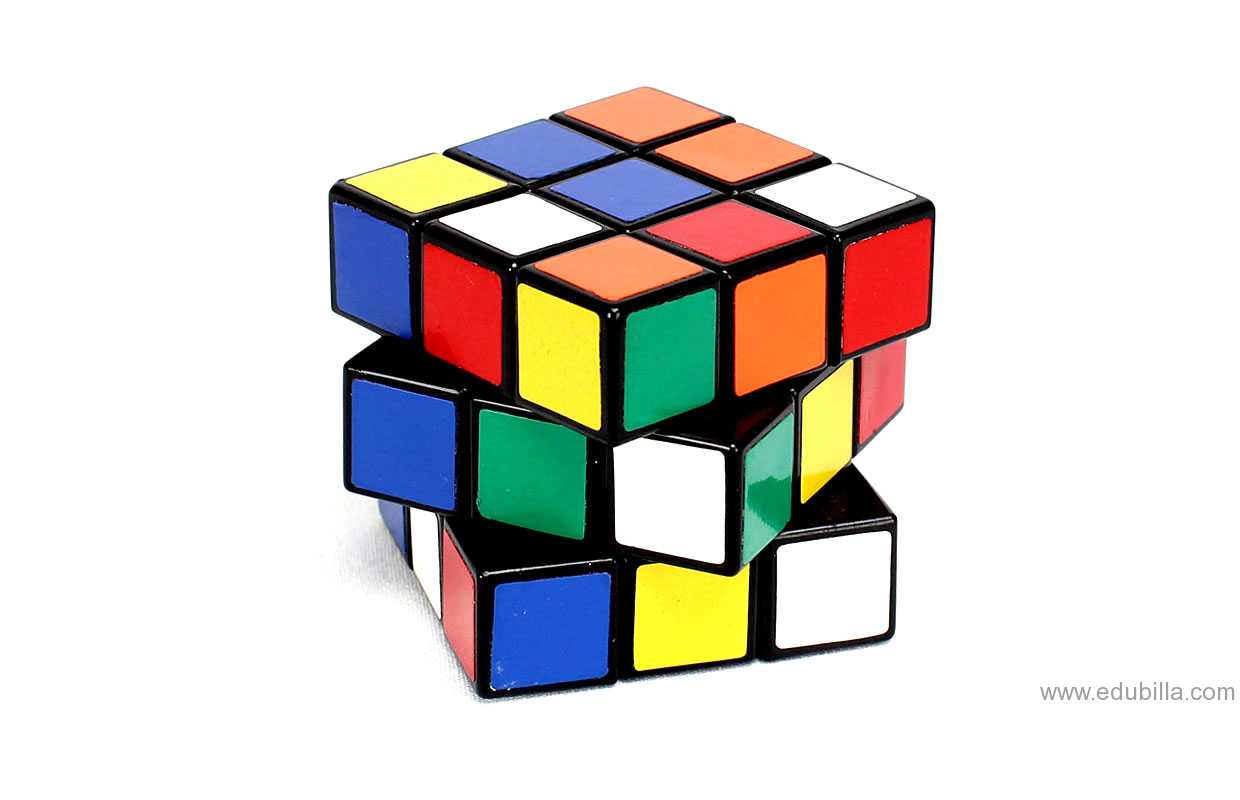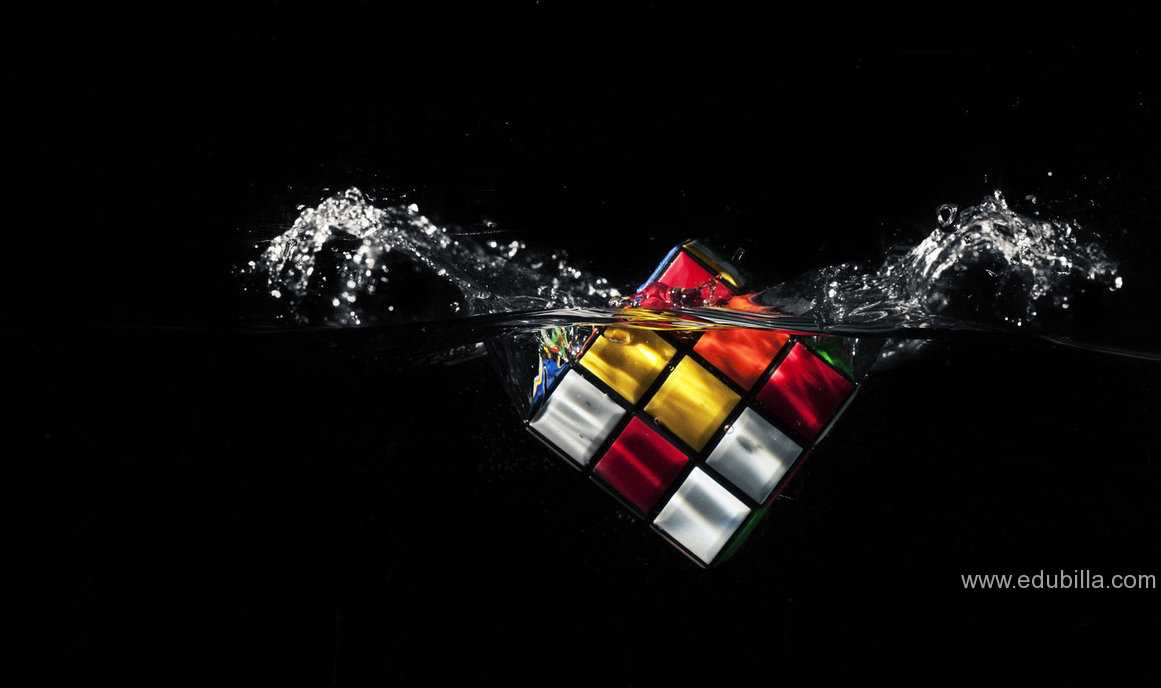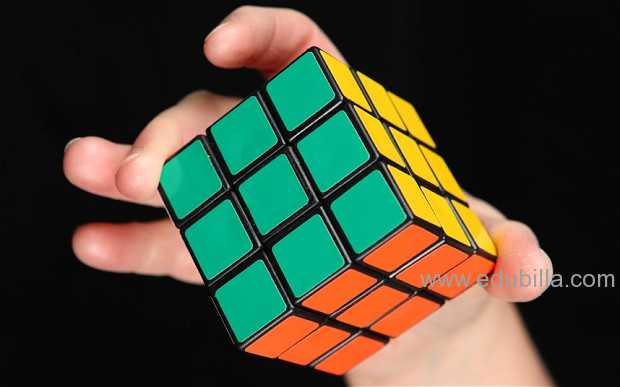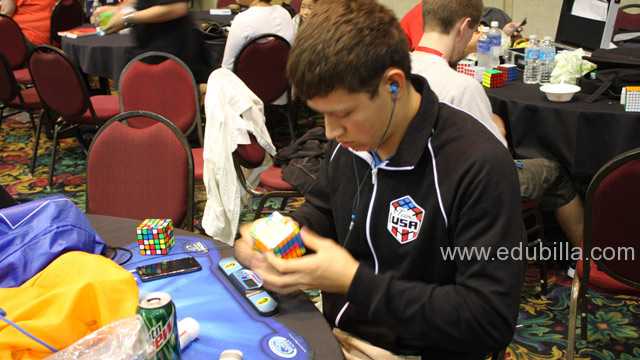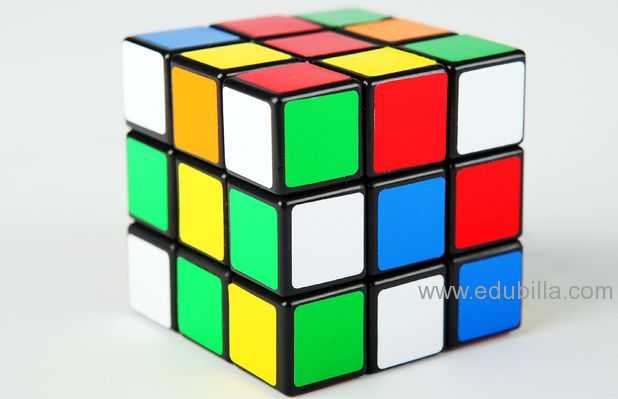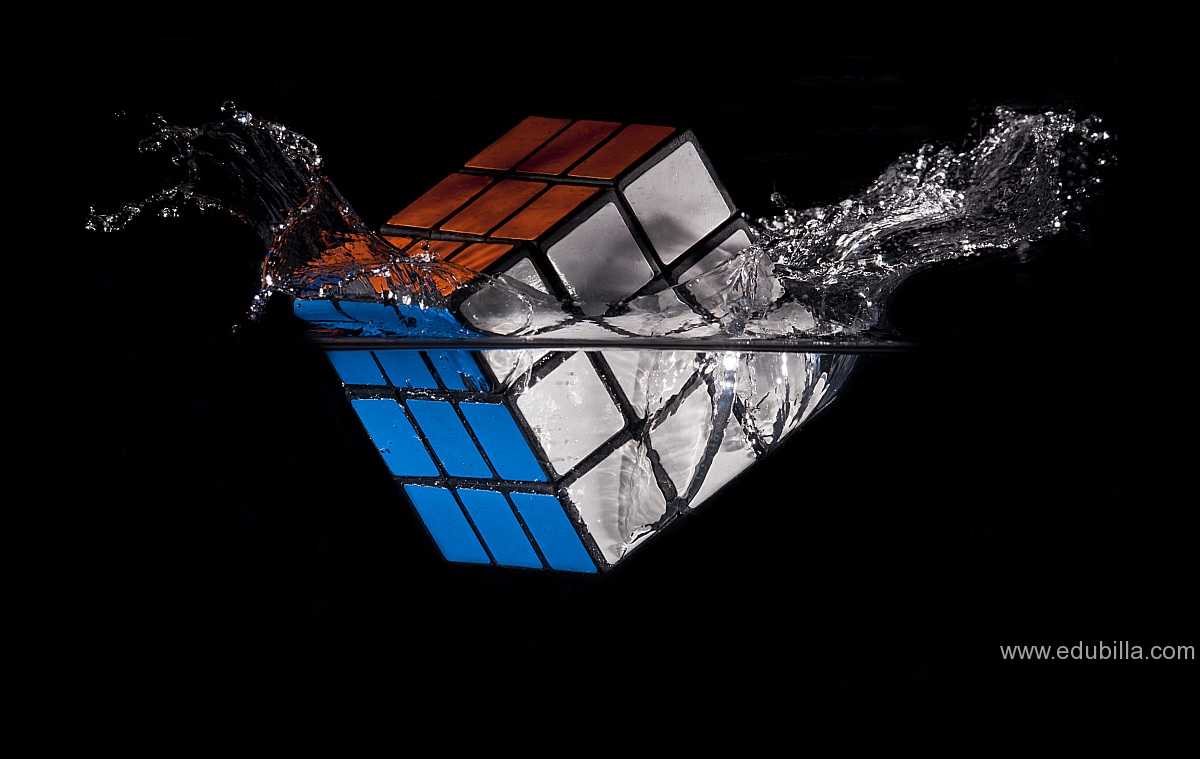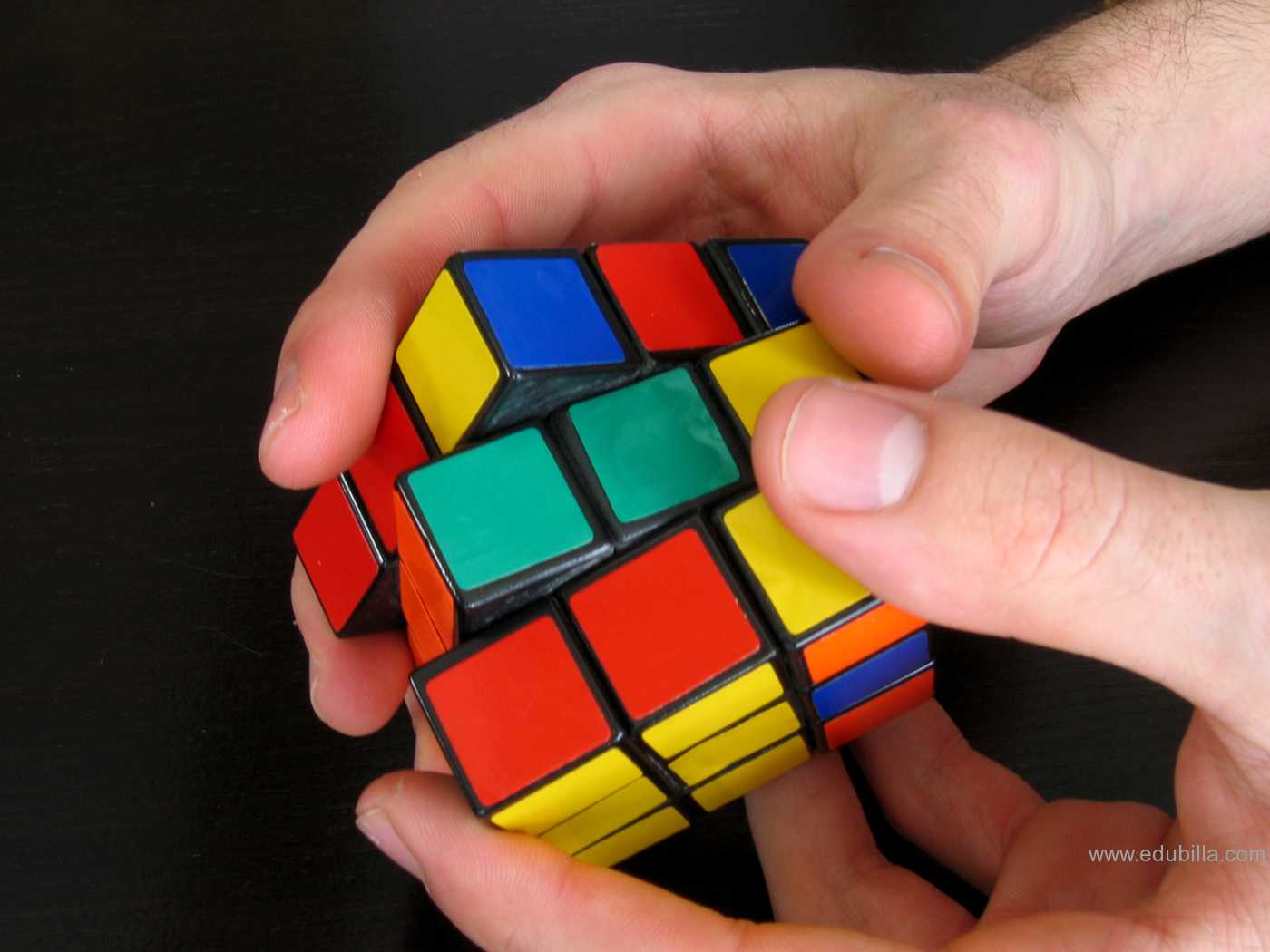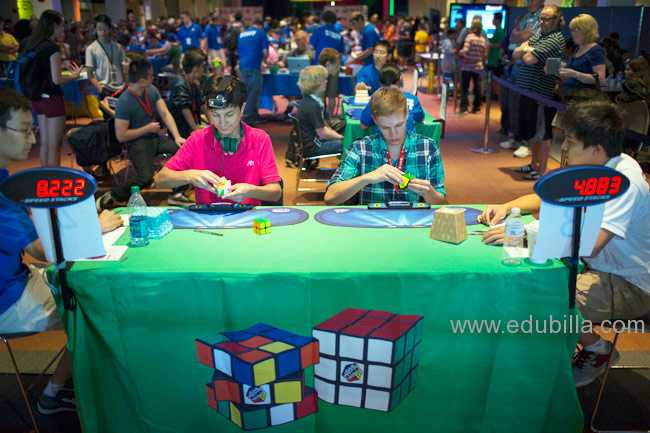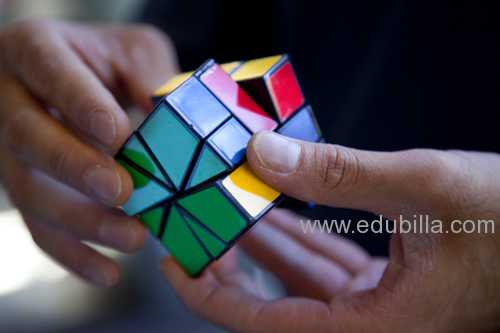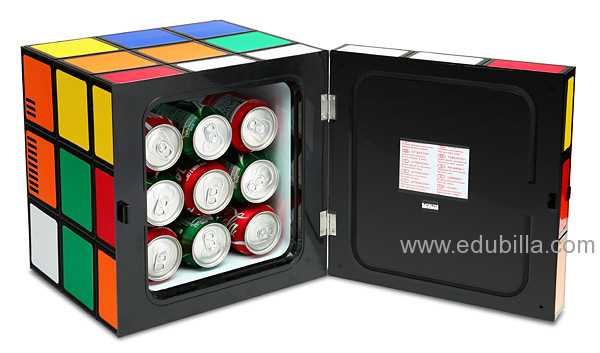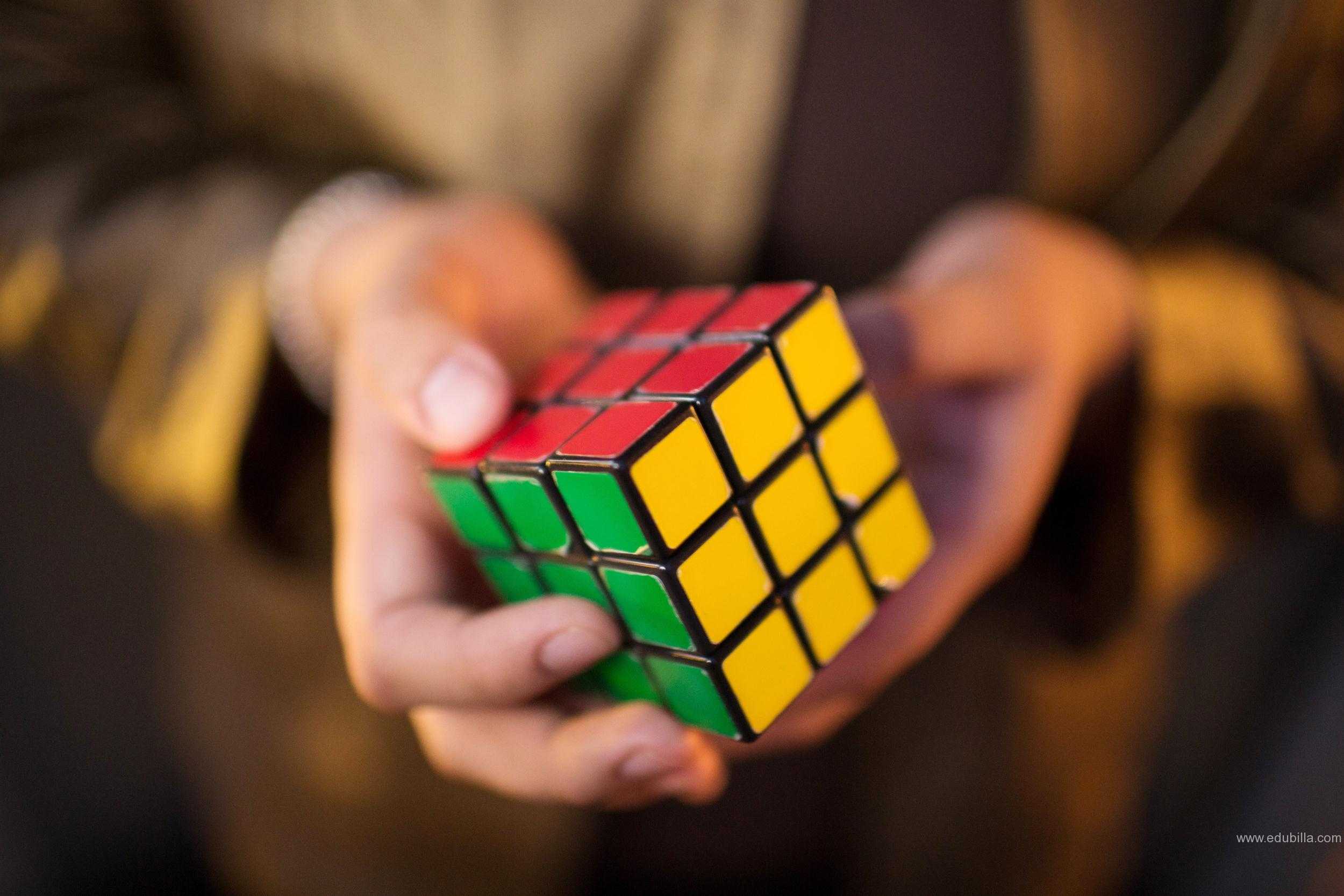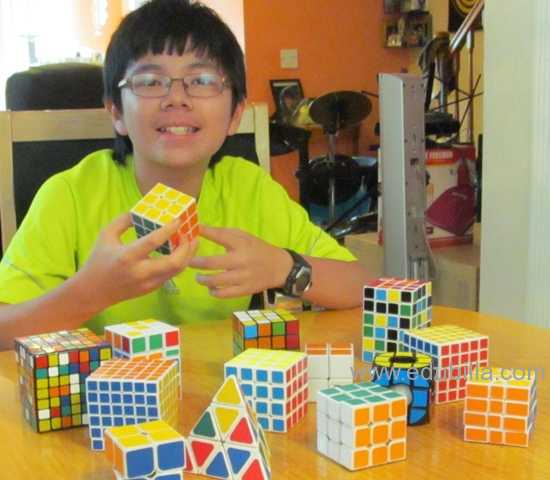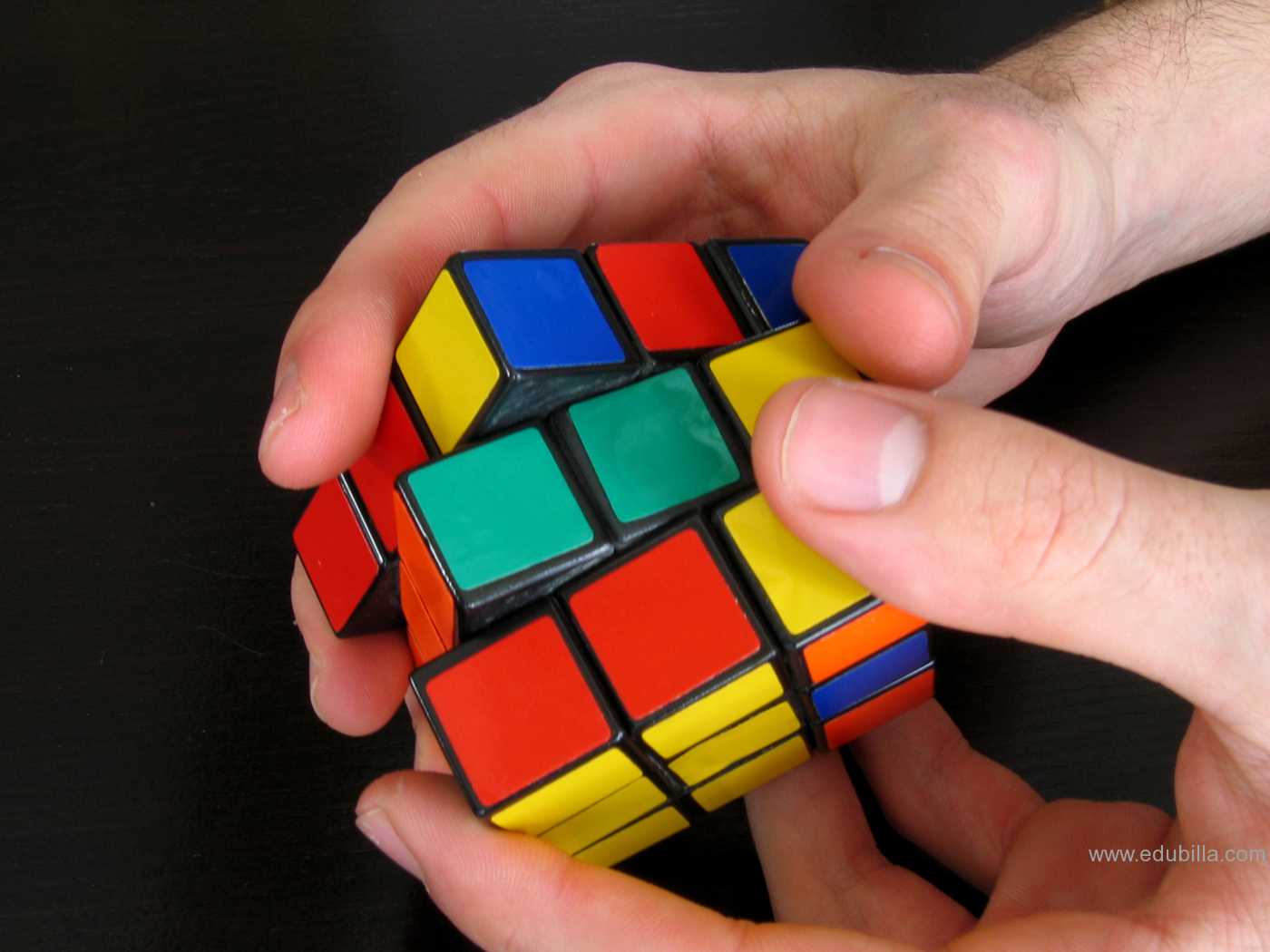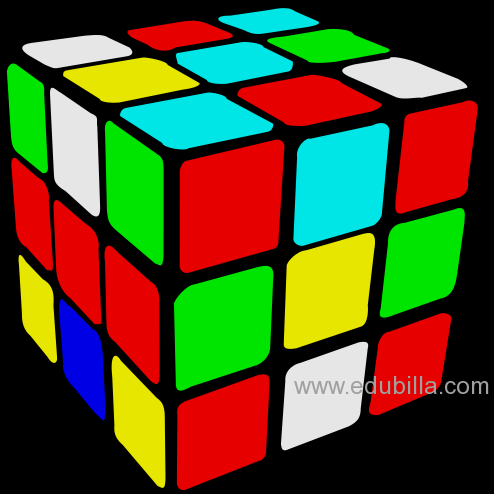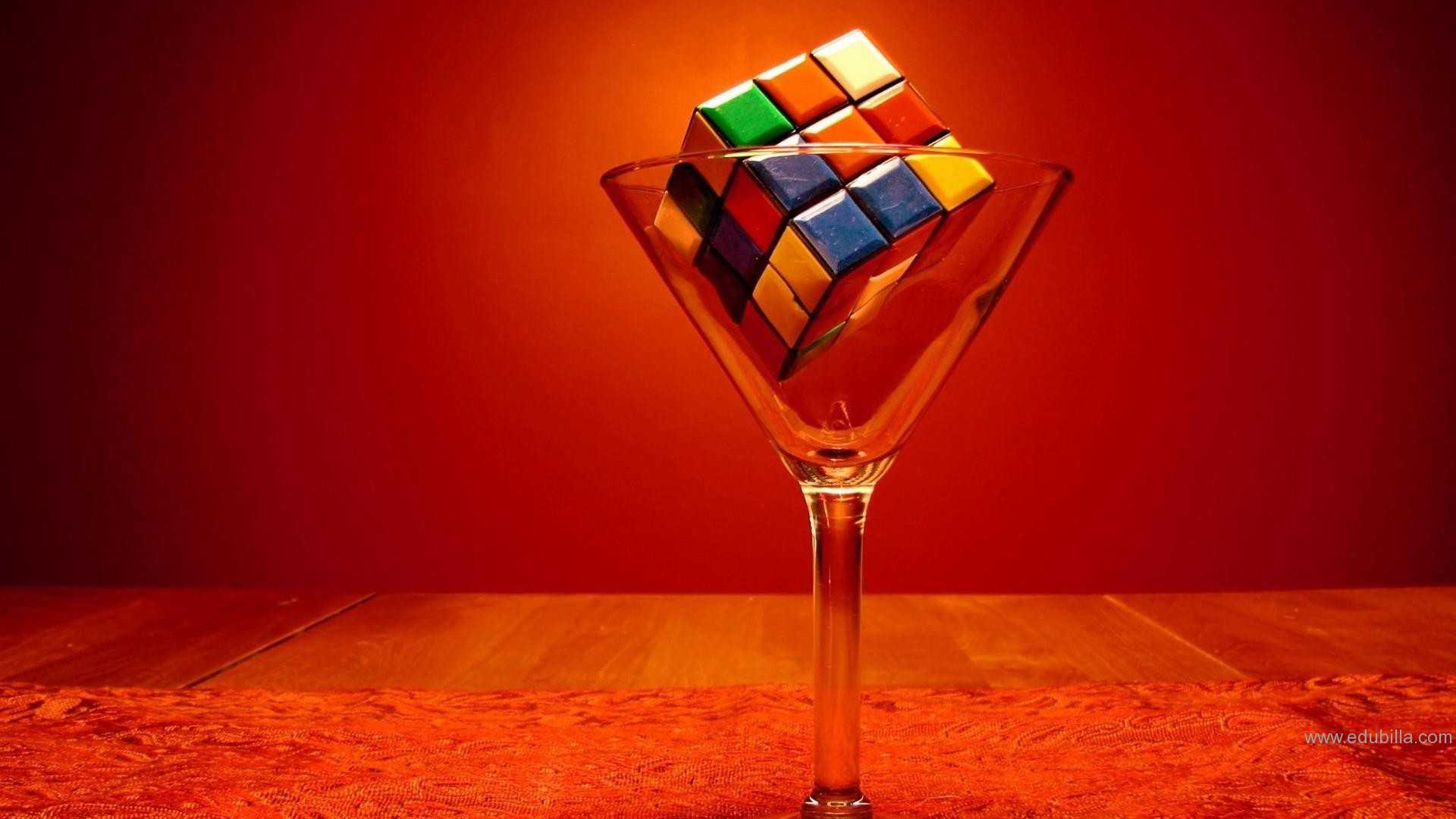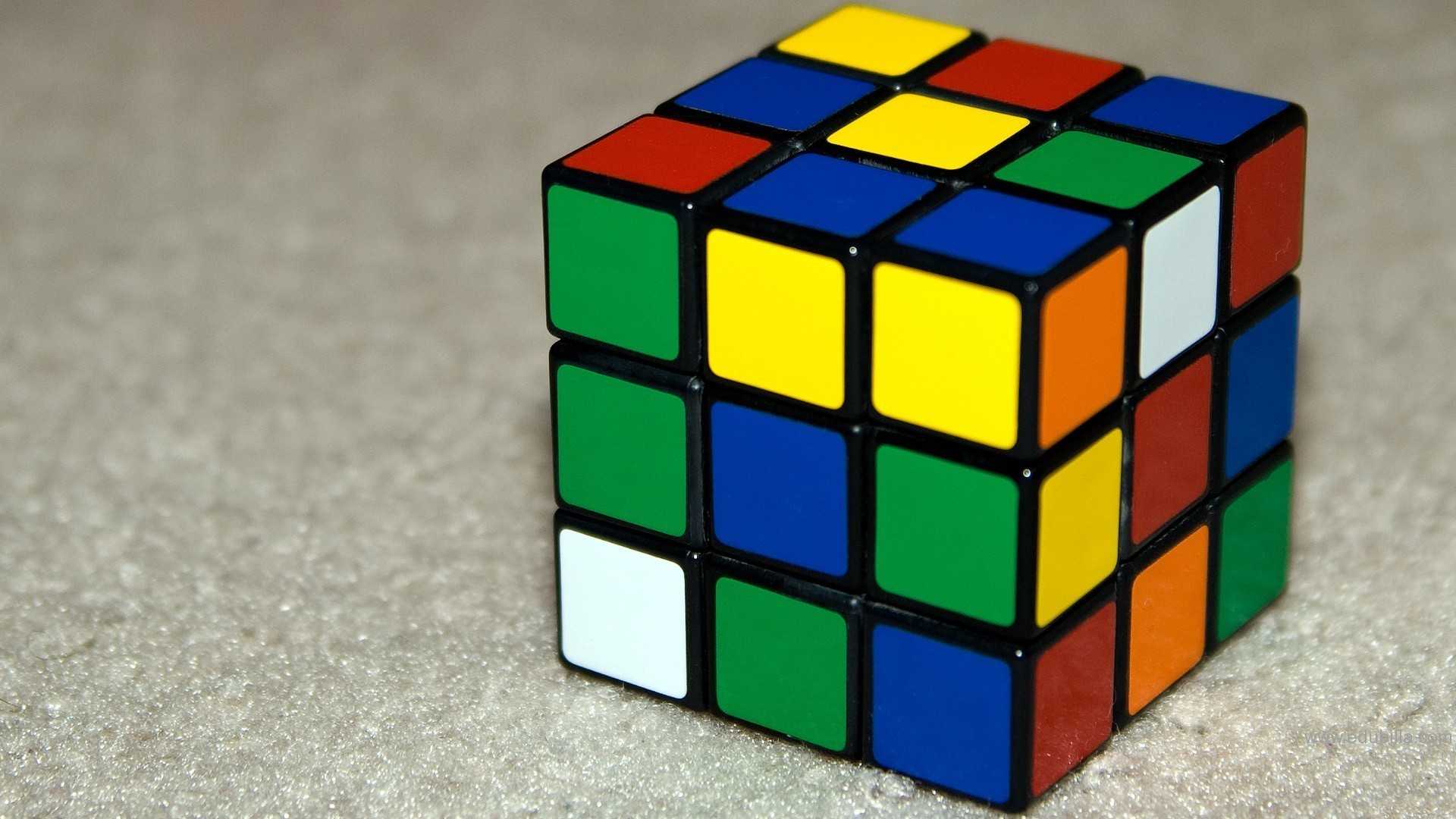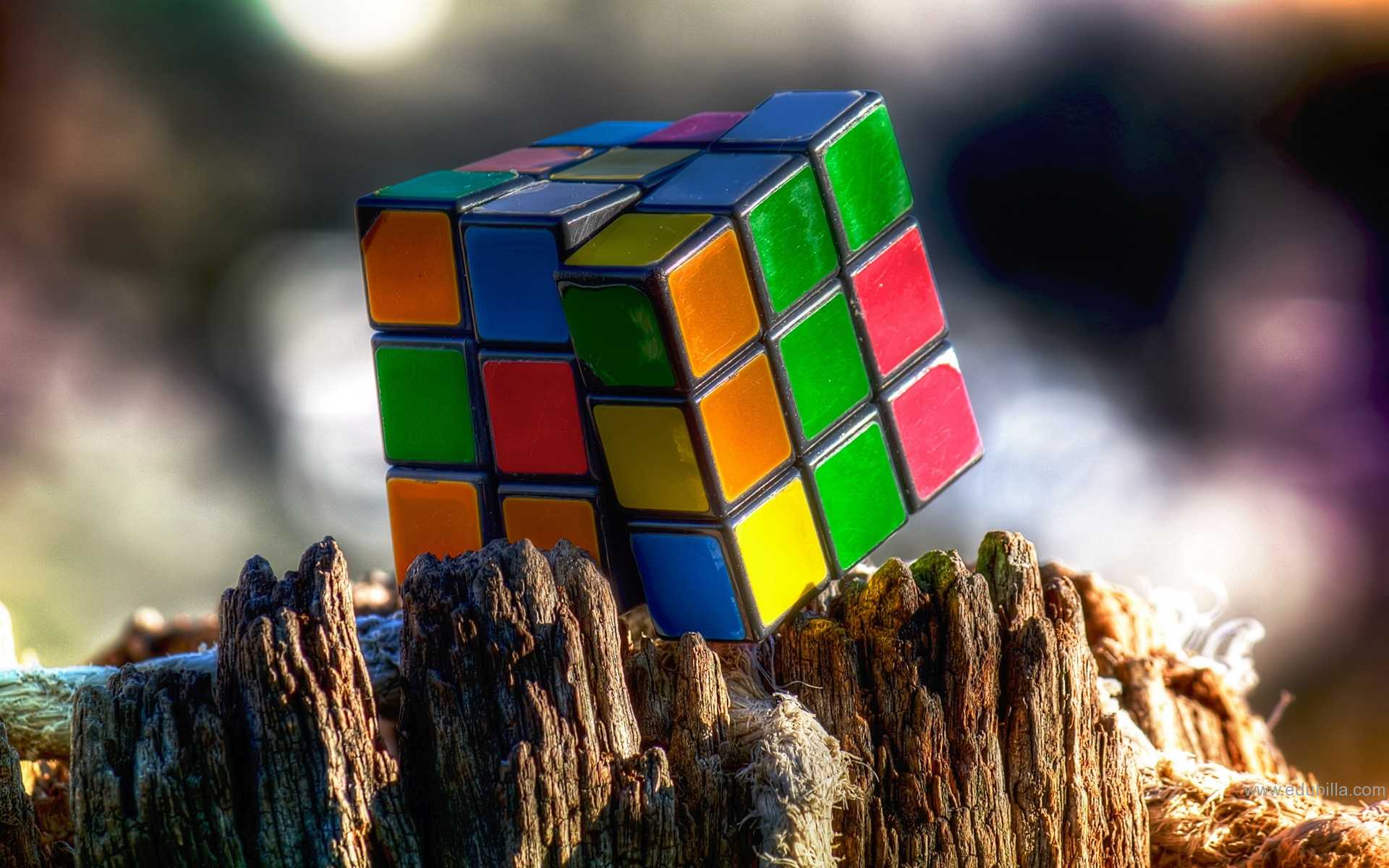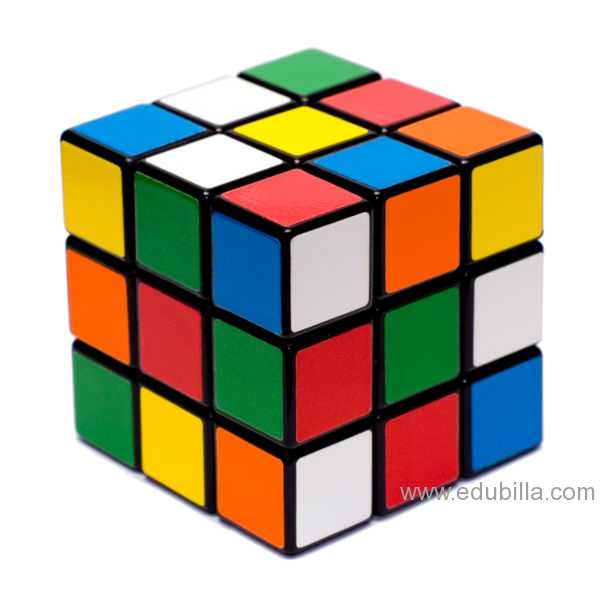
Overview Of Rubik's Cube
Rubik's Cube is a 3-D combination puzzle invented in 1974 by Hungarian sculptor and professor of architecture Erno Rubik. Originally called the Magic Cube, the puzzle was licensed by Rubik to be sold by Ideal Toy Corp. in 1980 via businessman Tibor Laczi and Seven Towns founder Tom Kremer, and won the German Game of the Year special award for Best Puzzle that year. As of January 2009, 350 million cubes had been sold worldwide making it the world's top-selling puzzle game.It is widely considered to be the world's best-selling toy.
- In 1974, a young professor of architecture in Budapest created an apparently impossible object.

Main Sections:
- The three main sections at the top offer first an introduction to the main concepts to keep in mind when working with the cube, as well as the notation used here (and most of it commonly found elsewhere).
- Second is a detailed solution that is well suited for beginners first learning the cube. If you have an unscrambled cube handy, there is a full example that you can follow along with as it goes to help see it hands-on. At the end I also offer some advise and links on more advanced solution methods.
- Finally, it turns out that once you can solve a 3x3, you can very nearly solve any cube of any size. The last section explains a general method for solving any Rubik's-type cubes of arbitrary size. Big one take more time to do all the work to solve, but are not really harder.
Records:
- Single time: The current world record for single time on a 3×3×3 Rubik's Cube was set by Collin Burns of the United States in April 2015 with a time of 5.25 seconds at the Doylestown Spring 2015 competition.
- Average time: The world record for average time per solve was set by Feliks Zemdegs at the Melbourne Cube Day 2013, with a 6.54 second average solve time.
- One-handed solving: The fastest single time of solving the cube with one hand is 6.88 seconds by Feliks Zemdegs at the Canberra Autumn 2015. The fastest average time of 10.87 seconds was made by Antoine Cantin at the Toronto Spring 2015.
- Feet solving: Jakub Kipa solved a Rubik's Cube with his feet in 20.57 seconds at the Radomsko Cube Theory 2015.
- Group solving (12 minutes): The record for most people solving a Rubik's Cube at once in twelve minutes is 134, set on 17 March 2010 by school boys from Dr Challoner's Grammar School, Amersham, England, breaking the previous Guinness World Record of 96 people at once.
- Group solving (30 minutes): On November 21, 2012, at the O2 Arena in London, 1414 people, mainly students from schools across London, solved the Rubik's Cube in under 30 minutes, breaking the previous Guinness World Record of 937. The event was hosted by Depaul UK
- On November 4, 2012, 3248 people, mainly students of College of Engineering Pune, successfully solved the Rubik's cube in 30 minutes on college ground. The successful attempt is recorded in the Limca Book of Records. The college will submit the relevant data, witness statements and video of the event to Guinness authorities.
- Blindfold solving: The record for blind solving is held by Marcin Kowalczyk of Poland, who solved a cube blindfolded in 21.17 seconds (including memorization) at PLS Szczecin 2014.
- Multiple blindfold solving: The record is held by Marcin Kowalczyk of Poland, who successfully solved 41 of 41 cubes blindfolded at the SLS Swierklany 2013.
- Fewest moves solving: Tomoaki Okayama of Japan holds the record of 20 moves set at the 2012 Czech Open.
- Non-human solving: The fastest non-human time for a physical 3×3×3 Rubik's Cube is 3.25 seconds, set by CubeStormer III, a robot built using Lego Mindstorms and a Samsung Galaxy S4.This beats the prior 5.27 seconds, set by CubeStormer II, a robot built using Lego Mindstorms and a Samsung Galaxy S2.This had in turn broken the previous record of 10.69 seconds, achieved by final year computing students at Swinburne University of Technology in Melbourne, Australia in 2011.
- Highest order physical NxNxN cube solving: Kenneth Brandon solved the 17x17 "Rubik's Cube" in a total of 7.5 hours.
Top 10 Solves:
- Collin Burns 5.25s at Doylestown Spring 2015
- Feliks Zemdegs 5.39s at World Championship 2015
- Mats Valk 5.55s at Zonhoven Open 2013
- Pavan Ravindra 5.58s at US Nationals 2015
- Bill Wang 5.72s at Canadian Open 2015
- Kevin Costello III 5.74s at Melrose Spring 2015
- Jiayu Wang 5.81s at Cube Elite Union Cage 2014
- Michal Pleskowicz 5.81s at World Championship 2015
- Lucas Etter 5.85s at Michigan 2015
- Jayden McNeill 5.91s at Lifestyle Seasons Summer 2015
Game Rules
Getting to Know Your Rubik’s Cube:
1.Identify the pieces. Before you start playing Rubik’s Cube, identify the different pieces of it. This will help you understand the mechanics of the Cube and more quickly solve it.
There are several different sized Rubik’s Cube games. For example, the original Rubik’s Cube is called “3x3.” This means that there are three layers to the Rubik’s Cube- a top, a middle, and a final layer.
The other sizes are 2x2, 4x4, and 5x5.
2.Identify the center pieces. On each side of your Cube are center pieces, which have only one color on them. The colors are either red, blue, white, yellow, green, or orange.
There are six center pieces located in the center of each side. Center pieces do not move and represent the color of a specific side.
Center piece colors always have a specific color opposite them on the Cube.White is always opposite yellow, orange is always opposite red, and green is always opposite blue.
3.Identify the logo piece. On your Cube, the logo piece is one color, usually white, and has the Rubik’s Cube logo on it.Generally, you’ll start with this side of the Cube facing up.
There is only one logo piece
4.Identify the edge pieces. On your Cube, each edge pieces have two different colors.These are often the last pieces of each layer that you will solve.
There are a total of twelve edge pieces on a Rubik’s Cube.
5.Identify the corner pieces. On your Cube, the corner pieces have three different colors.
There are a total of eight corner pieces.
Solving the Top Layer:
1.Position your Rubik’s Cube with the white center logo piece facing up. As you prepare to solve your Rubik’s Cube, it’s important to have this piece with the logo facing upwards. This will make it easier to solve each layer of the puzzle.
If your Rubik’s Cube is in a “solved” state at this point, you’ll first need to shuffle the pieces so that you can play.
2.Make a white cross across the top. With the center white logo piece facing up, position the pieces into the shape of a white cross.
This is one of the more difficult stages, so practicing it through trial and error will help you improve at solving the Cube.
It’s important to solve each section of your white cross in this specific order: blue, orange, green, red.
Make sure that the edge piece colors correspond to both the top white center logo piece and the red and blue side and center pieces.If the pieces are in these positions, you know you’re on the right track.
If you’ve made any mistakes, try reconfiguring the pieces until you get them into the correct alignment.
3.Solve the white corners. After you’ve created your white cross on the top face of the Rubik’s Cube and positioned the edge pieces properly, you’re ready to solve the white corners. By making sure that you’ve solved the white cross on the top layer before you position the corners, you’ll have an easier time positioning the proper pieces in the middle layer.
The white cross should still be on the top face of the Cube.
Remember that each corner pieces will have one white side and sides with two other colors.
If a corner piece is located on the bottom side or layer, then rotate it until the corner is directly below where you want it. From here, move the pieces until you get the corners into the correct position.
Follow the same steps to position the pieces until the corners align and the entire top side of your Cube is white.
Solving the Middle Layer:
1.Position Rubik’s Cube with white cross on the bottom. In order to properly solve the middle layer, position the completed white side on the bottom.This will set you up to put the edge pieces in their proper positions.
2.Position edge pieces. By putting the edge pieces into position on the middle layer first, you’ll more easily be able to position the rest of the layer.
It’s very important to note the vertical row of either blue, red, orange, or green.
Position the pieces until they’re in a vertical line by rotating the top side until the front color of the edge piece on the top side (without yellow) matches one of the side center pieces.How you move the edge piece is determined by the top face of that edge piece.
3.Follow the above steps until the edge pieces are in the correct position. At this point, the middle layer should be finished so that you can move on to solving the final layer.
If you have made any mistakes, manipulate the pieces until they’re in the proper positions.
Solving the Final Layer
1.Position Rubik’s cube with yellow-patterned side facing up. At this stage, you’ll have a yellow pattern on one face of your Cube. In order to properly solve the final layer, position the side with yellow pattern upwards.This will set you up to put the edge pieces in their proper positions.
At this point, the yellow pieces on the top don’t have to match the side pieces.
2.Make a yellow cross. Just like you did with the white face, position the yellow pieces into a cross.This will help you more easily position the remaining pieces on the final layer.
3.Make the corners yellow. You’re now ready to position the final pieces of your Rubik’s cube by making the remaining corners on this layer yellow.
Once you’ve positioned the yellow corners, you should have a completed Rubik’s Cube!
Equipments Need For Rubik's Cube
Rubik's Cube-Rubik's Cube is a 3-D combination puzzle
History Of Rubik's Cube
Rubik's Cube History Timeline:
1974
Erno Rubik, a Hungarian sculptor and professor of architecture, invents a plastic cube in which 26 smaller cubes make up one large cube. In its original state, each face of the cube consists of nine squares of the same color. The goal of the puzzle is to return the cube to this original state.
Jan. 1975
Rubik applies for Hungarian patent HU170062 for what he calls the "Magic Cube."
1977
The patent for the Magic Cube is approved.
1977
Test runs of the cube are produced and sold in toy shops in Budapest, Hungary.
Sept. 1979
Rubik strikes a deal with Ideal Toys to market the Magic Cube internationally.
1980
The Magic Cube is shown at London, New York, Nuremburg, and Paris toy shows.
May 1980
After renaming it "Rubik's Cube," Ideal Toys produces its first batch for export.
1981
Patrick Bossert, a 12-year-old from Britain, publishes his Rubik's Cube solution in a book entitled You Can Do the Cube. The book goes to #1 on the New York Times bestseller list.
June 1982
The first Rubik's Cube world championship takes place in Budapest. Minh Thai, a 16-year-old Vietnamese high school student from Los Angeles, wins the championship by solving the cube in 22.95 seconds.
1984
Ideal Toys loses a patent infringement suit filed by Larry Nichols for patent US3655201.
1995
Diamond Cutters International produces the most expensive Rubik's Cube called the Masterpiece Cube. It is valued at 1.5 million dollars. It is set in 18-karat gold and consists of 22.5 karats of amethyst, 34 karats of rubies, and 34 karats of emeralds.
25th Anniversary-26 Jul 2005
SourceThe cube celebrates its 25th anniversary on July 26th. A limited-edition cube is produced to mark the occasion.
2011
Feliks Zemdegs sets the world record for the fastest solve of a 3by 3 cube ever.he solved it in 5.66 second at the Melbourne open in june
Origin Of Rubik's Cube
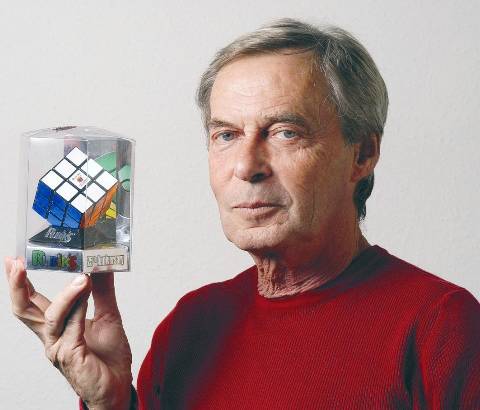
Governing Bodies
World Cube Association:
The World Cube Association (WCA) is an organization that regulates and holds Rubik's Cube competitions. It was founded by Ron van Bruchem of the Netherlands and Tyson Mao of the United States. The goal of the World Cube Association is to have "more competitions in more countries with more people and more fun, under fair conditions".
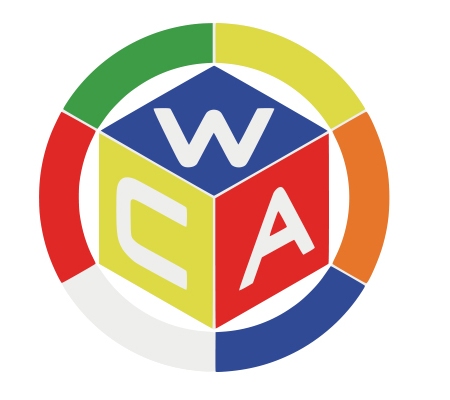
History of WCA:
In 1999, the first modern age speedcubers found each other on the Internet via Rubik's Games, a computer game with an electronic version of the Rubik's Cube. Chris Hardwick from Raleigh, NC founded the Yahoo! Group "Speedsolvingrubikscube" and the Unofficial World Records, a place where cubers could post their personal best times. Ron van Bruchem started speedcubing.com together with his friend Ton Dennenbroek, an avid puzzle collector.
Because the cubers were living all over the world, they wanted to organize a competition at which they could all meet. In 2003, under the guidance of Dan Gosbee, they organized the Rubik's Cube World Championship in Toronto. This first modern-age Rubik's Cube competition was a huge success, but there were lots of issues, due to the lack of good regulations. After the World Championship, Ron van Bruchem and Tyson Mao started organizing competitions in the Netherlands and Germany, as well as at Caltech in the United States. In 2004, they started the World Cube Association, which today has held competitions in 70 different countries.
Mission
- The World Cube Association governs competitions for all puzzles labelled as Rubik puzzles, and all other puzzles that are played by twisting the sides, so-called 'twisty puzzles'. Most famous of these puzzles is the Rubik's Cube, invented by professor Rubik from Hungary. A selection of these puzzles are chosen as official events of the WCA.
- The World Cube Association organises competitions all over the world, supported by national organisations responsible for organising competitions in their countries.
- The goal of the World Cube Association is to have more competitions in more countries with more people and more fun, under fair and equal conditions.
- The spirit of the World Cube Association is that people from all over the world have fun together in a friendly atmosphere, help each other and behave sportsmanlike.
Structure:
The World Cube Association is led by the WCA Board, consisting of the following members:
- Ilkyoo Choi - World (Korea / USA, Illinois)
- Olivér Perge - World (Hungary)
- Pedro Santos Guimarães - World (Brazil)
- Ron van Bruchem - World (Netherlands)
The following committees are responsible for the operational activities of the WCA:
- WCA Disciplinary Committee (WDC), led by Daniel Sheppard (United Kingdom)
- This committee advises the WCA Board in special cases, like alleged violations of WCA Regulations, and may be contacted by WCA members in case of important personal matters regarding WCA competitions.
- WCA Regulations Committee (WRC), led by Kit Clement (USA)
- This committee is responsible for managing the WCA Regulations.
- Results team, led by Sébastien Auroux (Germany)
- This team is responsible for managing all competition results.
- WCA Website team, led by Jeremy Fleischman (USA)
- This team is responsible for managing the WCA website.
- WCA Software team, led by Jeremy Fleischman (USA)
- This team is responsible for managing the WCA's software (website, scramblers, workbooks, admin tools).
Awards Related To Rubik's Cube
Erno Rubik Awards:
1978 – Budapest International Trade Fair, Prize for the Cube
1980 – Toy of the Year: Federal Republic of Germany, United Kingdom, France, USA
1981 – Toy of the Year: Finland, Sweden, Italy
1982 – Toy of the Year: United Kingdom (second time)
1982 – The Museum of Modern Art, New York selected Rubik's Cube into its permanent collection
1983 – Hungarian State Prize for demonstrating and teaching 3D structures and for the various solutions that inspired scientific researches in several ways
1988 – Juvenile Prize from the State Office of Youth and Sport
1995 – Dénes Gabor Prize from the Novofer Foundation as an acknowledgement of achievements in the field of innovation
1996 – Ányos Jedlik Prize from the Hungarian Patent Office
1997 – Prize for the Reputation of Hungary (1997)
2007 – Kossuth Prize the most prestigious cultural award in Hungary
2008 – Moholy-Nagy Prize – from the Moholy-Nagy University of Arts and Design
2009 – EU Ambassador of the Year of Creativity and Innovation
2010 – USA Science and Engineering Festival Award (Outstanding Contribution to Science Education)
2010 – The Hungarian Order of Merit Commanders Cross with the Star
2010 – Prima Primissima Prize
2012 – My Country Awards
2014 - Magyar Szent Istvan Rend ("The Order of Saint Stephen" - the highest medal awarded by Hungary)
2014 - Honorary Citizen of Budapest
Sample Documents Of Rubik's Cube
-Lance Armstrong




